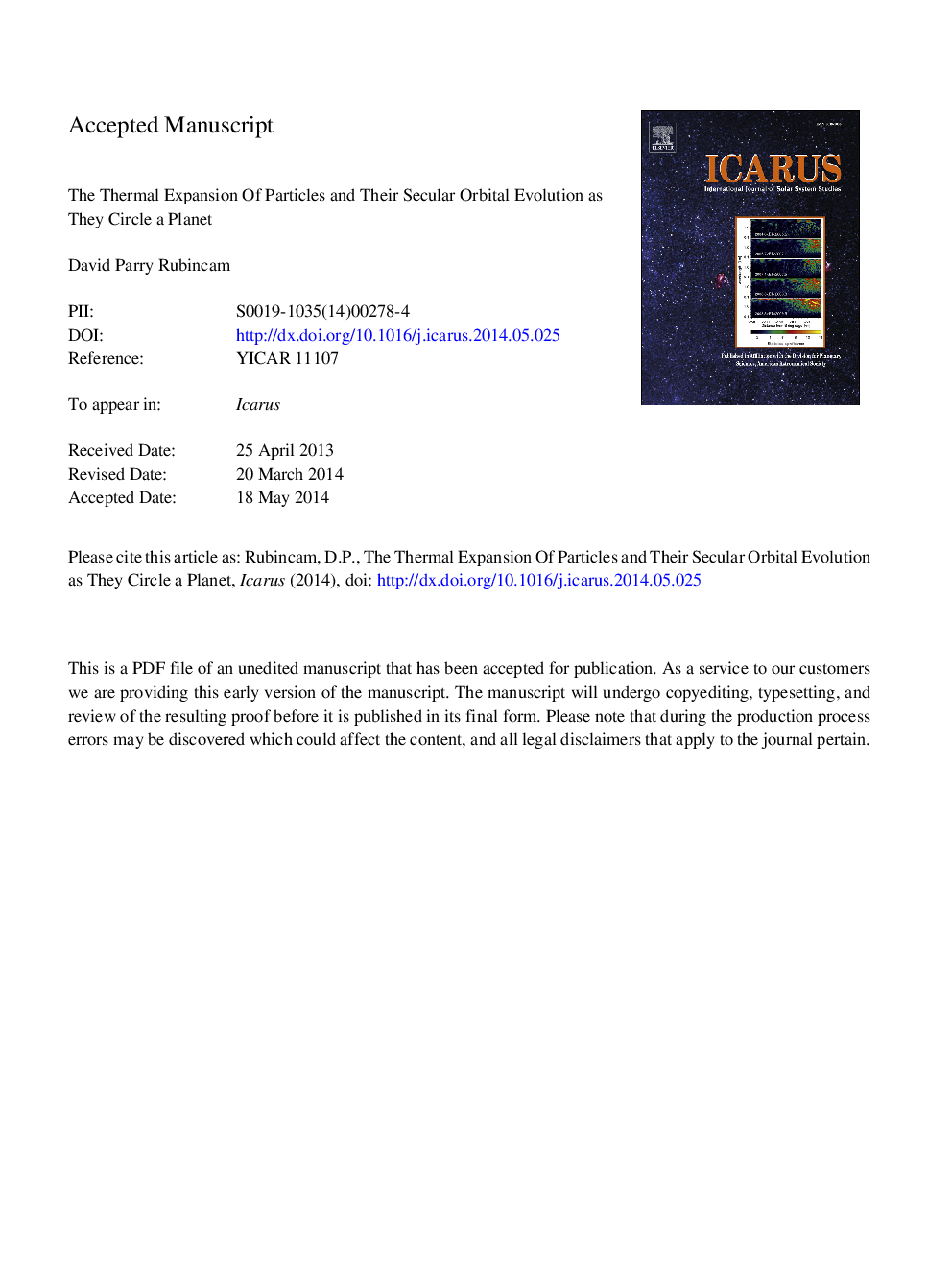| کد مقاله | کد نشریه | سال انتشار | مقاله انگلیسی | نسخه تمام متن |
|---|---|---|---|---|
| 8137907 | 1523551 | 2014 | 40 صفحه PDF | دانلود رایگان |
عنوان انگلیسی مقاله ISI
The thermal expansion of particles and their secular orbital evolution as they circle a planet
ترجمه فارسی عنوان
انعکاس حرارتی ذرات و تکامل مداوم آنها در سیاره ای که سیاره آنها را می چرخاند
دانلود مقاله + سفارش ترجمه
دانلود مقاله ISI انگلیسی
رایگان برای ایرانیان
کلمات کلیدی
حلقه های سیاره ای، مکانیک آسمانی، اشیاء نزدیک به زمین، مریخ، ماهواره، نور زودیاک،
موضوعات مرتبط
مهندسی و علوم پایه
علوم زمین و سیارات
علوم فضا و نجوم
چکیده انگلیسی
The thermal expansion and contraction of particles orbiting a planet can cause secular orbit evolution. This effect, called here the thermal expansion effect, depends on particles entering and exiting the shadow of the body they orbit. A particle cools off in the shadow and heats up again in the sunshine, suffering thermal contraction and expansion. The changing cross-section that the particle presents to solar radiation pressure, plus a time lag due to thermal inertia, lead to a net along-track force. The effect causes outward drift for rocky particles in circular orbits. For particles in the size range â¼0.002-0.02Â m orbiting the inner planets, particle orbits can outwardly evolve at the rate of â¼0.1RPlan per million years for Mars to â¼1RPlan per million years for Mercury for distances â¼2RPlan from the body, where RPlan is the planet's radius. Poynting-Robertson dominates thermal expansion beyond a few RPlan for the inner planets. Hence there are distances from a planet where the effects balance, depending on particle size. Orbits evolving outward from the thermal expansion effect would stop there, as well as those inwardly evolving from Poynting-Robertson. Thus particles would accumulate in these places, assuming the absence of other forces. Mars appears to be the best candidate for the operation of the thermal expansion effect. Particles in the size range considered here and orbiting in the Phobos-Deimos region would tend to be collected by the moons, sweeping the particles up and perhaps helping keep the region free of dust. The thermal expansion effect is overwhelmed by Poynting-Robertson for rocky particles orbiting Jupiter and Saturn and thus is unimportant; these planets are not considered here. For particles orbiting small asteroids, the thermal expansion effect is much larger than the Poynting-Robertson effect, but both are overwhelmed by ordinary solar radiation pressure, which increases orbital eccentricities rapidly. Meteoroids in eccentric orbits about the Sun also suffer the thermal expansion effect, but with only â¼0.0003e2Â AU change in semimajor axis over a million years for a 2Â m meteoroid orbiting between Mercury and Earth.
ناشر
Database: Elsevier - ScienceDirect (ساینس دایرکت)
Journal: Icarus - Volume 239, 1 September 2014, Pages 96-104
Journal: Icarus - Volume 239, 1 September 2014, Pages 96-104
نویسندگان
David Parry Rubincam,
